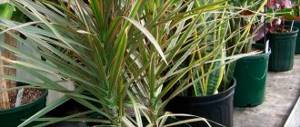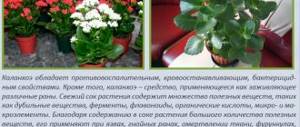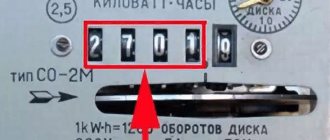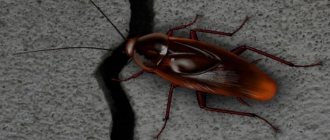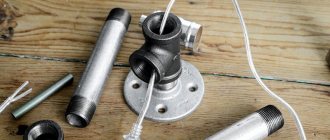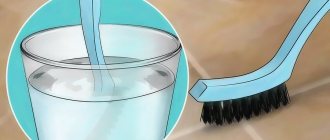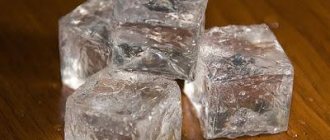Description
In the middle of the 19th century.
began selling a begonia hybrid created from 2 wild species, the origin of which was Bolivia. Next, different species were crossed with it, the homelands of which were Peru, Ecuador, Bolivia and Chile. The modern assortment was created on the basis of at least 7 species. Terry forms were first developed by breeder Louis Van Goutte in Belgium. This state is still called the largest European producer today. The country has allocated 400 hectares for these plants, and about 100 million tubers are produced annually. In gardening, varieties are divided into large-flowered, medium-flowered and small-flowered.
Popular varieties of large-flowered form:
- Harlequin - edged, grows up to 24 cm, blooms yellow with a red edge, flower diameter 11.5 cm;
- Bud de Rose - pink-shaped, grows up to 24.5 cm, blooms with a pink tint, flower diameter 18 cm;
- Dak Red - peony-shaped, grows up to 15 cm, flower is dark red, diameter 10 cm.
- Popular varieties of medium-flowered form:
- Multiflora maxima White - grows about 16.5 cm, white flower, 10 cm in diameter;
- Switzerland - height 15.5 cm, flower of a dark red hue, diameter 6 cm;
- Tasso - height 15.5 cm, flower of a rich red hue, diameter 6 cm.
- Popular small-flowered varieties:
- Ami Jean Bard - height 11.5 cm, orange flower, 3 cm in diameter;
- La Madelon - height 14.5 cm, pink flower, diameter 4 cm;
- Frau Helene Grams - height 11.5 cm, orange-yellow flower, 3 cm in diameter.
Tuberous begonia is characterized by its ability to purify the air in the house and kill harmful microorganisms. In group planting, plant activity increases. In folk medicine, infusions are prepared that take:
- elderly people;
- for colds;
- bad mood.
Tuberous begonia, growing and blooming well, brings happiness. If the plant withers, this is a signal about the deterioration of the situation in the house or about the appearance of ill-wishers.
Planting tuberous begonias in the garden
It is best to buy begonias not in large supermarkets, but in special departments and garden services. Starting from the end of February, tubers from Holland are on sale, ready for planting. They are usually packaged in special bags filled with peat or sawdust, but are often sold in bulk in small stores.
You need to select very carefully and focus not on a picturesque picture, but on the planting material itself. You shouldn’t wait for prices to drop until only low-quality goods remain that are unlikely to sell. The tuber should not be soft, overdried, covered with mold or plaque.
It is often difficult to see signs of decay. From time to time, a bag contains 2-3 plants, which can differ quite greatly from each other in functional characteristics. You can feel around a couple of packages to find the largest and densest samples. It’s good if they have awakened buds.
Advice! It is very important to pack the begonias well, for example, wrap them in several newspapers. If you simply bag them and move them outside, these delicate plants will freeze and likely die.
Place
The place for planting such flowers must be selected with all meticulousness and responsibility, since this plant is extremely heat-loving and needs good soft light.
Important! Direct sunlight can “burn” susceptible begonia foliage.
The interval between planted tubers must be selected based on the plant variety. For a tall begonia it is 30–40 centimeters, and for a short one, 15 centimeters is enough.
Planting begonias
Just before planting, remove the dead roots and place three-quarters of the tuber in a warm liquid with a fungicide for dressing for thirty minutes (see the product instructions for proportions).
To germinate a flower with superficial roots, a shallow pot or container with drainage made of expanded clay, brick or coarse crushed stone is suitable. It is better to immediately feed the soil with mineral components. Ready-made earthen composition should be purchased at the store. If you cook with your own hands, then take: two parts of leaf soil, part of humus, peat and sand. It is not recommended to compact the soil for begonias.
The gap between plants is maintained at ten centimeters, and to the edge of the container - five centimeters. The convex side of the tuber is placed deep into the ground for root formation, and on the concave part, which is kept on the surface, the buds will grow.
It is not recommended to organize greenhouse conditions for the plant, this way the tuber quickly adapts to external conditions. The place for germination is suitably lit without direct rays, ventilated without unnecessary drafts, the temperature required is from 15 to 17 degrees.
Reproduction
Reproduction of tuberous begonias, like the vast majority of other plants, can occur vegetatively and by seeds.
Tuberous begonia is rarely propagated by seeds. This is explained by the fact that most of the beautiful hybrid species do not produce seeds (sterile) or produce severe splitting (do not retain parental characteristics). However, resistant varieties or special hybrids can be cultivated from seeds.
Begonia has small seeds that are extremely inconvenient to sow. This should be done in February, mixing them with fine sand or using snow for contrast. Ordinary soil for seedlings, surface sowing, careful drip watering. The seeds are germinated at a temperature of approximately 25 degrees under a transparent shell. They dive, like other seedlings, after the formation of the first leaves. Another pick may be required.
Vegetative propagation of begonias by cuttings or dividing the tuber is more often used.
Cuttings
When propagating by cuttings from optimally developed plants, cut the apical part of the stem 6–10 centimeters long with several leaves. The lower leaves on the cut cuttings are removed, and the cut area is sprinkled with charcoal powder, then the cuttings are planted in sand, watered and covered with a glass jar. The jar must be lifted periodically to avoid excessive moisture.
The cuttings take root after about 2-3 weeks. After this, it is transplanted into nutrient soil. The superiority of propagation by cuttings over seed propagation is that the plant acquired in this way retains all the characteristics of the original plant.
Tuber division
The method of dividing a tuber for propagation and propagation of a flower is used in greenhouses. To do this, you need to moisten the planting by carefully spraying water over the surface of the soil.
The soil must be kept moist, watering as necessary. Transfusion is very harmful because the roots and shoots have not grown. Tuber division technology is mainly used for rare plants.
How to care for begonia at home?
Before planting, the site is prepared. The soil must be water and breathable. Clayey, heavy soils are not suitable. They can be improved by adding sand and peat. Organic fertilizers are applied to sandy soils with low fertility.
The plant is characterized by sensitivity to intense sunlight. It will bloom beautifully in partial shade. But if the planting site is heavily shaded, then the shoots become elongated, the tuberous begonia sheds its leaves, and the formation of flowers will not occur or there will be only a few of them. The shoots of the bushes are very delicate and can be damaged by the wind, so the plantings must be protected from strong winds.
Before planting the plants, the soil needs to be watered for a couple of days. Throughout the entire period of growth and development of tuberous begonia, it is necessary to ensure regular watering. But if the soil is waterlogged, the leaves will begin to fall. A very important point is the arrangement of drainage, which will ensure prompt removal of excess water.
Tuberous begonia is a non-winter-hardy plant; low temperatures easily damage it. Therefore, they are planted in the ground at the end of spring or early summer.
The plant is planted with formed leaves and buds. Before planting, the tubers are kept in boxes in an earthen substrate for 2.5 months (sprouts should appear). Before this, they are disinfected - kept for about 2 hours in a 0.06% solution of potassium permanganate or 0.2% solution of foundationazole. Place in boxes at a distance of 11-12 cm so that there is enough space for the formation of the root system. The tubers are covered with earthen mixture, the tops are left on the surface. Then they need to be watered evenly and left in a bright place at a temperature of 18-20°C.
Water as it dries. From the third week of May, for hardening, you need to reduce the intensity of watering and increase the frequency of ventilation. When the seedlings grow to 12 cm and the roots become well developed, they are transplanted to a permanent site.
Tuberous begonia is planted in open ground, maintaining a distance of 18-20 cm between neighboring plants. Plants are watered regularly, avoiding waterlogging of the soil. After watering, the soil is loosened and fed with fertilizers every 2 weeks.
When the plant grows to 7 cm, the top is trimmed to stimulate the formation of side shoots.
After the latter grow to 11-12 cm, their tops are cut off to form additional branches. Next, the shape of the bush can be slightly adjusted, excessively long branches can be trimmed or removed. To awaken dormant buds, pinch off the top of the bush and cut off the branches growing at the bottom of the stem.
Optimal conditions for planting
Begonia can be planted in two ways: seedlings and non-seedlings. In the first case, the tubers are placed in peat so that they sprout. In the future, when they have formed real leaves, they will need to be transplanted to a permanent place. With the seedless method, the tubers are immediately placed in a permanent pot or soil.
In a pot
Before planting, you need to choose a pot. Preference should be given to medium-sized, shallow and not too wide containers, with an approximate diameter of 12 cm. When planting, 3-4 cm should remain from the top of the tuber to the edge of the pot. These flowers are planted in pots in February - March. The soil for planting will need to be moist, loose, and well permeable to moisture and air. It should contain a lot of nutrients and sand.
Find out how to properly plant indoor flowers in a pot.
You can compose it as follows:
- deciduous soil - 3 parts;
- peat - 1 part;
- sand - 1 part.
If possible, it will be useful to feed the soil with one part of rotted cow manure.
Step-by-step instructions for planting begonias in a pot are as follows:
- Place a layer of expanded clay or other material at the bottom of the pot that will act as drainage.
- Pour the prepared substrate into the container.
- Make a depression in the center.
- Place the tuber in the hole.
- Sprinkle the rhizome, leaving the buds open.
- Water generously.
- After the sprouts reach a height of 4-5 cm, add soil, covering the tuber almost completely.
The plant loves diffused sunlight (but can grow well in partial shade), high humidity - at 60–70% and warm temperatures - +20...+23 °C. The smaller the flowers, the more light they require. During the winter months, begonias go dormant. At this time, it needs to be moved to a dark, cool room with a temperature of about +12 °C.
Did you know? It is popularly believed that begonia absorbs negative energy that accumulates in the house. Instead, it brings harmony and calm. It is recommended to place a plant with red flowers in the bedroom, and with white and pink flowers - in the kitchen, loggia, hallway.
At this time, the flower does not stop moisturizing. After leaving the dormant period, the plant needs to be transplanted into a larger pot - 20 cm in diameter. During growth, you should not change the lighting for the flower, this can negatively affect its condition.
Video: how to plant tuberous begonia
In open ground
It is better to prepare seedlings for planting in the garden. Plant the tubers in peat in March. Starting from the end of April - from the first week of May, the plants will need to be hardened off - for a few minutes, and gradually increasing the time, take the pots outside. Hardened plants adapt faster to a new location and will be less susceptible to diseases and parasites. Begonia must be planted in an open area during a period when there is no longer a threat of frost - in May - June. It is better to choose a place that is warmed by the morning sun. Can be planted under trees or in the shade of taller plants.
Check out such ornamental plants as coral begonia and mason begonia.
The area must be sheltered from drafts. If frost does occur, the bush needs to be insulated by covering it. As in the case of planting in a pot, sprouts or tubers need to be planted in loose, nutritious soil. Heterotic varieties are accustomed to denser soil. The distance between plants should be 30–35 cm. The permissible deepening of sprouts grown from tubers is 2–2.5 cm lower than they grew in a pot; those from purchased seeds are 1–1.5 cm lower. Before planting, potassium and phosphorus-containing fertilizers are applied to the hole.
After placing the sprout in the hole, it is covered with the prepared substrate and watered well. It should be remembered that begonia reacts poorly to drought, wind, drafts, and low air humidity. The plant dies even at the slightest frost. The most heat-loving varieties are those with large flowers, the most cold-resistant are heterotic hybrids; they can tolerate short-term drops in temperature down to +10 °C. Plants with tall stems need to be staked.
Diseases and pests: treatment methods
Tuberous begonia is a delicate and capricious plant that needs careful care and attention. If grown improperly, the plant can be damaged by diseases and pests.
Pests:
- leaf nematode - damages young shoots, buds and leaf apparatus, the plant dies. The bushes are treated with 0.05-0.2% heterophos;
- greenhouse aphid - damages young shoots, flowers and leaf apparatus, feeds on sap. In a greenhouse, the reproduction process takes place year-round. The bushes are treated with a 2-4% soap solution (200-350 g of laundry soap per 10 liters of water), tobacco infusion (100 g infused in warm water for 48 hours, filtered, diluted 2 times with water), and insecticide solutions.
Diseases:
- powdery mildew - the entire above-ground part of the bush suffers. Individual spots with a white coating merge, a powdery coating forms, and the leaves dry out. Tuberous begonia is treated with fungicides, a solution of colloidal sulfur (0.3-0.5%), copper-soap solution (20 g of soap and 2 g of copper sulfate are dissolved in 1 liter of water);
- gray mold – the disease is caused by a fungal pathogen. Spots with a gray coating form on the plant, then they transform into brown rot. The bushes are treated with fungicides, Bordeaux mixture (1%), copper-soap solution (20 g of soap and 2 g of copper sulfate are dissolved in 1 liter of water).
Features of reproduction
Begonia can be propagated in 4 ways:
- using cuttings;
- seeds;
- dividing tubers;
- fragment of a leaf.
Video: propagation of tuberous begonias
Cuttings
For cuttings in April - May, shoots with 2 or more buds and several leaves 10 cm long are cut and placed in a sand-peat mixture. The substrate is watered periodically. It is important to ensure that it does not become waterlogged. Cover the container with a glass cap or plastic bottle and ventilate periodically. 2–4 weeks after the roots have formed, the cuttings are planted in a pot.
Find out how to properly use iodine to fertilize geraniums.
From seeds
Begonia is rarely propagated by seeds, as it is very troublesome. This method is mainly used by specialists for whom it is important to preserve varietal qualities. At home, this method is usually not used. The fact is that begonias have too small seeds. In addition, the seed material must undergo special treatment before planting. Subsequently, it is treated with growth stimulants and planted in open ground under a film or in a container with a mixture of foliage, turf, peat and sand under glass, maintaining a temperature of +22...+25 °C.
The substrate is moistened with a spray bottle. After 2 leaves are formed on the sprouts, they are picked using a 2x2 pattern. Later you will need to carry out 2 more picks according to the 4x5 and 6x7 scheme. In April, the sprouts are transplanted. Their roots are checked for rot, the diseased ones are removed, the healthy ones are kept for 20 minutes in a solution of potassium permanganate. The sprouts are regularly watered and protected from sunlight. Flowering should occur 135–150 days after transplantation.
Dividing a bush or rhizomes
Most often, at home, begonia is propagated by dividing the tubers. This is done as follows:
- One tuber is divided into several lobes with a knife, leaving 2-3 growth points on each.
- The cut areas are treated with charcoal.
- The shares are planted in peat for growing seedlings or directly into the ground.
- They are watered periodically.
- After the appearance of strong shoots, they are transferred to a permanent place of residence.
Leaves
Reproduction by leaves is carried out in those varieties that have fluff on the underside of the leaf or with a creeping stem. Instructions:
- A strong, fleshy leaf is cut from the stem, cut into several triangular parts, leaving at least one vein in each fragment.
- These fragments are planted cut side down in containers filled with substrate or sand.
- Cover with glass or a plastic bottle and periodically ventilate and spray.
- After 20 days, young leaves should appear. After which they need to be hardened.
- After 3 months, young plants can be planted in a pot or flowerbed.
There is an easier way. Place a whole healthy leaf in water, adding activated carbon and “Kornevin” to it, wait for the roots to appear, and then transplant it into a container with substrate.
What to do with tuberous begonia in the fall?
In autumn, initial frosts do not harm the tubers, so tuberous begonia is dug up after the leaves have fallen. A significant increase in tubers occurs at the end of the growing season due to the accumulated supply of nutrients and the establishment of renewal points.
In the house, the potted plant will bloom almost until the end of autumn. In October, the intensity of watering is reduced. After flowering is completed, the shoots are cut off and the tubers remain in dry soil or sand at a temperature of 8-10°C. In March - April they are transplanted into fresh soil mixture and watered regularly. When sprouts appear, the pots are placed in the light. If a large number of shoots are formed, they are partially used for cuttings, leaving 1-2 of the best shoots.
Growing and care at home
In general, begonia does not require special care. Regular watering, fertilizing, pruning and replanting are needed.
Watering
It is advisable to water plants in pots in the morning once every 3 days, so that the flower organs can dry out before exposure to sunlight and not get burned. The water should be settled and at room temperature. Bays must be avoided. Often, to maintain the required level of humidity, begonia breeders place pots of begonia in trays of wet peat. The help of a sprayer will be required twice or thrice a week. In the summer, more frequent watering and spraying is needed, twice a day - morning and evening.
However, you need to spray water near the plant, not on it. In summer and throughout the entire flowering period, watering should be intensive. The earthen clod must not be allowed to dry out. In spring and autumn, water volumes will need to be reduced. Before the dormant period, watering should be reduced gradually.
Top dressing
After planting, 2-3 fertilizing with potassium nitrate is done at weekly intervals. Later, you will need to apply a universal fertilizer with a small amount of nitrogen every 2 weeks.
Important! Excess nitrogen threatens to stretch the stems and rot the plant.
The last feeding should be done in early October. This way the plant will have time to prepare for the transition to the dormant period.
How to prune and replant correctly
Begonia is pruned to form a bush and before wintering. In young plants whose stem has grown to a height of 6-7 cm, you need to cut off the top. This will give rise to the development of side shoots. Side shoots are cut off when they grow 10 cm.
In October, after the leaves have dried, cut the stem with sharp scissors, leaving 2-3 cm from the tuber. Replant the begonia as it grows into larger pots. What they do for this:
- An earthen lump is removed from the old container, the tuber is cleaned from it, and it is inspected for damage.
- Then they are placed in a new pot and covered with prepared substrate, which is purchased in a specialized store or prepared independently from half deciduous soil and half sand, peat and manure.
Young plants are replanted annually. More mature - once every 2 years.
Read more about how to properly transplant a monstera at home.
How to propagate tuberous begonia?
There are 3 methods of reproduction:
- seeds;
- tubers;
- cuttings.
The seed propagation method has several advantages. During the year we receive:
- conditioned tubers;
- flowering plants.
Seed material is sown in late December - early February. The earthen substrate is characterized by good moisture capacity and light structure. Tuberous begonia seeds are not embedded in the substrate, they are sprayed with water, covered with glass and kept at a temperature of 25-27°C. Crops must be sprayed regularly, but the seedlings must not be exposed to drops condensed from inside the glass. The glass must be raised for ventilation and moisture drainage. After the seeds have sprouted (2 weeks after sowing), the temperature must be lowered to 18°C. After another 2 weeks, the glasses are removed. In December - January, crops need to be illuminated for 5 hours in the morning and evening; in February - March, additional illumination time is reduced.
The dive is carried out twice:
- when the plants reach the 2-3 leaf phase, the distance between neighbors should be 2-2.5 cm;
- after 30 days, when the plants become crowded. The distance between seedlings is 5-10 cm. Once every 14 days, seedlings are fed with a fertilizer solution. When it is very sunny, the plants need to be shaded. It is also necessary to harden them - leave them in the open air. After 1.5 months, the seedlings can be planted.
The maximum increase in tubers occurs in September-October. When sown in December-January and appropriate care at the end of the growing season, they grow up to 1.5 cm in diameter.
The method of propagation by cuttings has the advantage that the varietal characteristics of the plant are completely preserved. The disadvantage of this method is that it reduces the yield of planting material. Royal tubers should be placed in boxes with soil mixture, crushed with humus and moistened. When the shoots grow to 6 cm, they are carefully broken out and planted in boxes filled with a sand-humus mixture. When it is very hot and sunny, the seedlings are shaded and the soil is regularly moistened.
After about 20 days, roots form. Plants are transplanted into boxes, the distance from each other should be 10 cm. Placed in a well-lit place, at a temperature of 21-22°C. Subsequently, the seedlings are fed with fertilizers and watered. In the fall, they are transported to a greenhouse for growing and kept until November, reducing the intensity of watering.
Then the tubers are processed and stored for winter.
Tuberous begonia can also be propagated by stem cuttings. In February - March, side shoots should be cut off from a potted plant, placed in a container of water or planted in a pot and covered with a glass container. After the formation of the root system, the seedlings dive.
As a rule, 5-10 buds sprout on good tubers - this depends on their age and size.
They can be cut into pieces with 1-2 shoots. Before planting, the cut must be treated with a solution of potassium permanganate.
Growing tuberous begonia from seeds
Begonia seeds are very small. Inside the fruits, 1-2 cm in size, in which seeds are formed, there can be up to 1000 of them.
Seeds are sown in late December - early January on a moderately moist peat-soil mixture. They can be sprinkled, but it is better to cover them with glass or film. After this, leave it to germinate in the light. Watering in the form of spraying before emergence is done if necessary. Shoots germinate slowly - after 2-4 weeks. With their appearance, the temperature must be reduced to 18°C.
With the appearance of the first true leaves, the seedlings begin to ventilate. Begonia seedlings are pricked at least three times as the leaves of neighboring plants close together. The first picking is the most difficult, since the seedlings, like their roots, are small. But begonias easily tolerate thinning: seedlings placed in a new substrate easily take root. The distance between seedlings after the first picking should be 2 cm, after the second - 4, after the third - 7 cm.
Having finished picking, the plants are moistened, and when there is no moisture left on the leaves, the seedlings are again covered with film. After the final picking, the seedlings are planted in a permanent place. This usually happens in early June. At first, begonia needs to be shaded.
When sown in December, begonia blooms in July or August. At home, it blooms until November. Plants obtained from seeds grow in 2-3 years, and until then they are not large. For the winter they need to be moved indoors, since at this age begonia does not have a dormant period.
Use in landscape design
Upright plants are planted in above-ground containers or flower beds. They look great against the background of a decorative “wall”, in a white plastic flowerpot with a back wall, against a background of gray crushed stone or painted pebbles.
The beauty of blooming tuberous begonia will not leave anyone indifferent; it will improve the mood of every person. It is necessary to care for the plant carefully and painstakingly, but in gratitude you will receive beautiful flowering bushes. If you wish, you can arrange a magnificent flowering garden on your windowsill.
